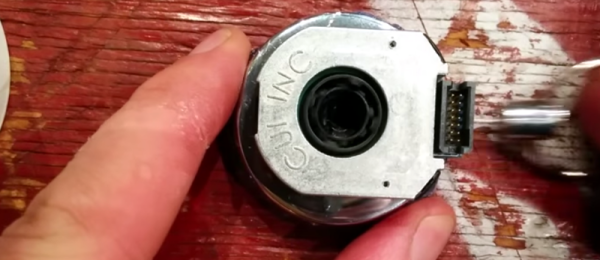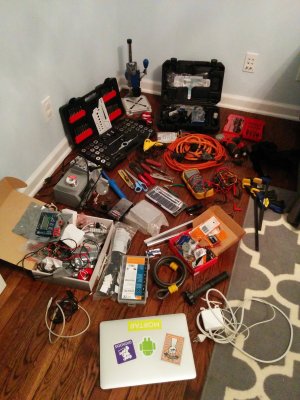It’s 9AM on any given Sunday. You can be found in your usual spot – knee-deep in wires and circuit boards. The neighbor’s barking dog doesn’t grab your attention as you pry the cover off of a cell phone, but the rustling of leaves by the back door does. Seconds later, several heavily armed SWAT officers bust in and storm your garage. You don’t have time to think as they throw your down on the cold, hard concrete floor. You’re gripped by a sharp stinging pain as one of the officers puts his knee in the square of your back. Seconds later, you’re back on your feet being lead to the back of an awaiting police cruiser. You catch the gaze of one of your neighbors and wonder what they might be thinking as your inner voice squeaks: “What did I do wrong?”
The answer to this question would come soon enough. Your crime – hacking your dad’s tractor.
“That’s like saying locking up books will inspire kids to be innovative writers, because they won’t be tempted to copy passages from a Hemingway novel.”
-Kyle Wiens
John Deere is trying to convince the Copyright Office that farmers don’t really own the tractors they buy from them. They argue that the computer code that runs the systems is not for sale, and that purchasers of the hardware are simply receiving “an implied license for the life of the vehicle to operate the vehicle.”
In order to modify or “hack” any type of software, you have to copy it first. Companies don’t like the copying thing, so many put locks in place to prevent this. But because hackers are hackers, we can easily get past their childish attempts to keep code and information out of our hands. So now they want to make it illegal. John Deere is arguing that if it is legal for hackers to copy and modify their software, that it could lead to farmers listening to pirated music while plowing a corn field. No I am not making this up — dig into this 25-page facepalm-fest (PDF) written by John Deere and you’ll be just as outraged.
Trying to keep hackers out using the DMCA act is not new. Many companies argue that locking hackers out helps to spur innovation. When in fact the opposite is true. What about 3D printers, drones, VR headsets…all from us! The Copyright Office, after holding a hearing and reading comments, will make a decision in July on whether John Deere’s argument has any merit.
Let us know what you think about all this. Can hackers and the free market learn to live in harmony? We just want to fix our tractor!
Thanks to [Malachi] for the tip!



 [Chris], [Marek], and [Dorian] wanted to log all the telemetry data from [Chris’] downhill bike. One of the biggest challenges is to measure the force absorbed by the suspension on the front fork. The three had seen a few attempts at this before. Those used a retractable wire like what holds keys to a custodian’s belt, mated with a potentiometer to measure the change. This is where the term stringpot comes from. The problem is that your resolution and sensitivity aren’t very reliable with this setup.
[Chris], [Marek], and [Dorian] wanted to log all the telemetry data from [Chris’] downhill bike. One of the biggest challenges is to measure the force absorbed by the suspension on the front fork. The three had seen a few attempts at this before. Those used a retractable wire like what holds keys to a custodian’s belt, mated with a potentiometer to measure the change. This is where the term stringpot comes from. The problem is that your resolution and sensitivity aren’t very reliable with this setup. They came to play
They came to play









